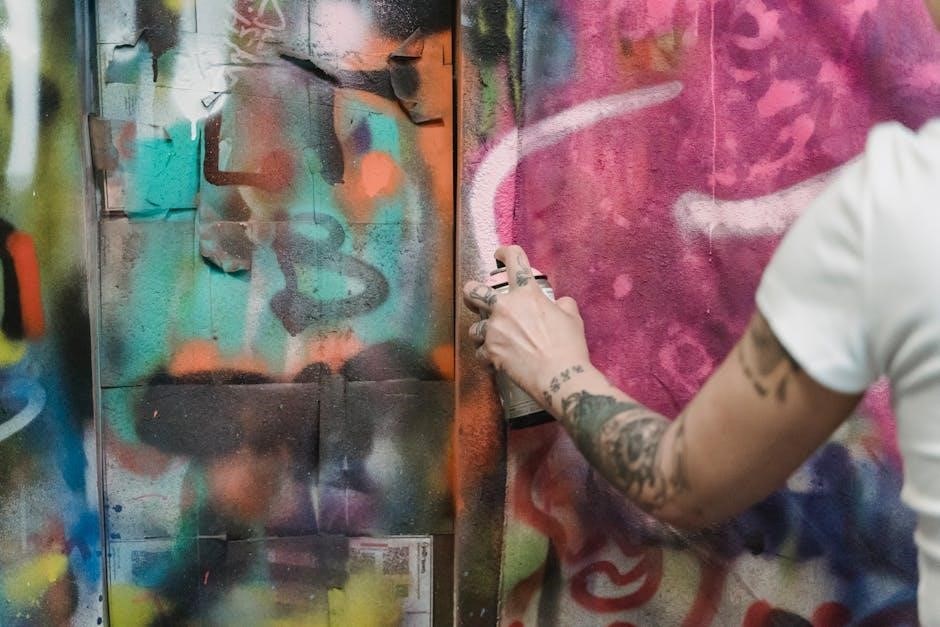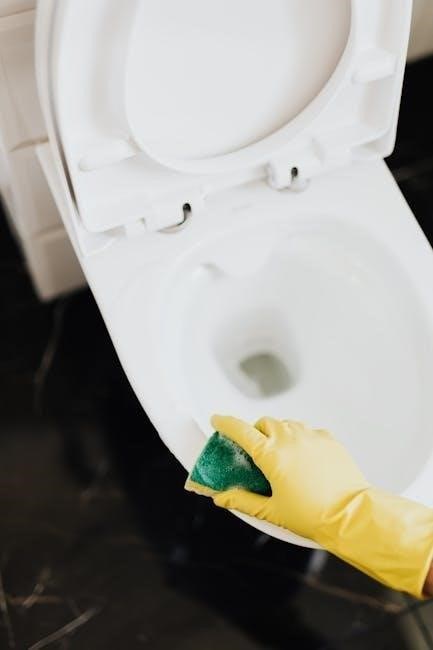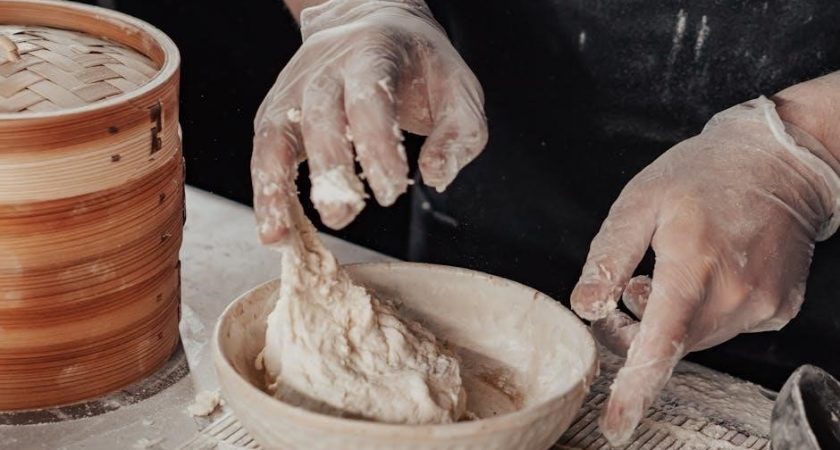Making a Murderer is a gripping real-life thriller documenting Steven Avery’s journey from exoneree to prime suspect in a new crime, sparking debates on justice and corruption.
Overview of the Series
Making a Murderer is a thought-provoking documentary series that explores the real-life case of Steven Avery, a man wrongfully convicted of attempted murder, only to face another murder charge after his exoneration. Filmed over a decade, the series delves into the complexities of the U.S. legal system, raising questions about police conduct, DNA evidence, and the fairness of trials. The show’s creators, Laura Ricciardi and Moira Demos, present a detailed account of the events, offering a gripping narrative that captivates viewers and sparks intense debates about justice and corruption. The series has become a landmark in true crime storytelling, leaving audiences questioning the truth behind the convictions of Avery and his nephew, Brendan Dassey.
Background on Steven Avery and Brendan Dassey
Steven Avery was wrongly convicted of attempted murder in 1985 and served 18 years before DNA evidence exonerated him. After his release, he sought justice for his wrongful imprisonment but was soon accused of murdering photographer Teresa Halbach. His nephew, Brendan Dassey, who has intellectual disabilities, was also charged with the crime based on a controversial confession. The series highlights the questionable tactics used by law enforcement and prosecutors, particularly in their treatment of Dassey, raising concerns about coercion and the reliability of his statement. Their cases have sparked widespread debate about the fairness of the legal system and the potential for wrongful convictions.
Episode Guide and Key Moments
Making a Murderer spans 10 episodes, chronicling Steven Avery’s exoneration and subsequent murder charges, alongside nephew Brendan Dassey’s controversial confession, sparking national debates.

Season 1 Episode Breakdown
Season 1 of Making a Murderer consists of 10 episodes, each delving into the complexities of Steven Avery’s case. Episode 1 introduces Avery’s wrongful conviction and exoneration, while Episode 2 explores his lawsuit against Manitowoc County. The midpoint reveals the shocking murder of Teresa Halbach, shifting focus to Avery’s new charges. Episodes 5-7 examine the controversial investigation, including the discovery of evidence and Brendan Dassey’s confession. The season builds suspense, questioning the integrity of law enforcement and the justice system. Each episode masterfully weaves interviews, courtroom footage, and dramatic reenactments, leaving viewers grappling with the truth. The finale sparks debate, as Avery’s fate hangs in the balance.
Season 2 Updates and Developments
Season 2 of Making a Murderer explores the aftermath of Steven Avery’s conviction, delving into his and Brendan Dassey’s ongoing legal battles. The season introduces new evidence, such as the CD containing photos of Teresa Halbach’s car, and highlights developments in their appeals. Lawyers Kathleen Zellner and Laura Nirider take center stage, challenging the integrity of the original investigation. The series also examines public perception and the emotional toll on the families involved. With 10 episodes, Season 2 raises more questions about justice and accountability, leaving viewers to ponder the reliability of the criminal justice system and the true fate of Avery and Dassey.

Key Characters and Their Roles
Steven Avery, a wrongfully convicted man-turned-suspect, and his nephew Brendan Dassey are central figures. Prosecutors, defense attorneys, and law enforcement shape the narrative, highlighting justice system complexities.

Steven Avery and His Legal Battles
Steven Avery’s legal battles are central to Making a Murderer. Wrongfully convicted of attempted murder, he spent 18 years in prison before DNA evidence exonerated him. Upon release, Avery sought justice for his wrongful imprisonment, suing Manitowoc County and local officials. However, his pursuit of accountability was derailed when he became the prime suspect in the murder of Teresa Halbach. The series meticulously documents Avery’s second trial, raising questions about police misconduct, DNA evidence handling, and potential frame-ups. His case highlights systemic flaws in the criminal justice system, sparking widespread debate among viewers about his guilt or innocence.

Brendan Dassey and His Involvement
Brendan Dassey, Steven Avery’s nephew, became entangled in the case after a controversial confession. Dassey, then a teenager with cognitive and learning disabilities, was questioned without legal representation. His statements, often contradictory, raised concerns about coercion by investigators. The series highlights how his limited understanding and vulnerability may have led to unreliable testimony. Dassey’s conviction, based largely on his confession, sparked widespread debate about interrogation tactics and the treatment of intellectually challenged individuals in the justice system. His case underscores the complexities of obtaining accurate confessions and the potential for miscarriages of justice. Dassey’s story remains a focal point of public empathy and legal scrutiny.
Law Enforcement and Prosecutors
The series scrutinizes the actions of law enforcement and prosecutors, particularly in Manitowoc County. Allegations of misconduct, including potential evidence tampering and coercive interrogation techniques, are central to the narrative. Investigators’ decisions, such as the handling of Steven Avery’s property and the questioning of Brendan Dassey, raise ethical concerns. Prosecutors’ strategies, including the reliance on questionable confessions, are also examined. These actions fuel debates about bias, accountability, and the integrity of the justice system. The portrayal of law enforcement and prosecutors in the documentary has sparked widespread criticism and calls for reform, highlighting the need for transparency in criminal investigations and prosecutions.

Criminal Justice and Legal Themes
Making a Murderer explores systemic issues in the criminal justice system, highlighting concerns about police conduct, DNA evidence, and the reliability of confessions in securing convictions.
Issues with Police Conduct
Making a Murderer raises troubling questions about police ethics, suggesting potential coercion of confessions and tampering with evidence. The series highlights how law enforcement’s alleged misconduct may have unfairly targeted Steven Avery and Brendan Dassey, undermining the integrity of their trials. Viewers are prompted to consider how systemic biases and procedural flaws can lead to wrongful convictions. These issues spark debates about accountability and transparency within police departments, emphasizing the need for reforms to ensure justice is served fairly and impartially. The documentary’s portrayal of these events challenges viewers to critically evaluate the role of law enforcement in the criminal justice system.
The Role of DNA Evidence
DNA evidence plays a pivotal role in Making a Murderer, highlighting its power to both exonerate and implicate. Steven Avery’s initial wrongful conviction was overturned due to DNA testing, which proved his innocence in a previous crime. However, DNA later became a contested factor in the murder case, with questions arising about contamination and handling. The discovery of Teresa Halbach’s DNA in Avery’s trailer was central to the prosecution, while doubts lingered about the reliability of such evidence. This duality underscores the complexities of forensic science and its impact on criminal cases, leaving viewers to ponder the balance between scientific certainty and human error in the pursuit of justice.

Public Reaction and Controversy
Making a Murderer sparked intense public debate, with viewers divided on Steven Avery’s guilt. The series ignited controversies over trial fairness, police conduct, and the criminal justice system’s reliability, fueling widespread discussion and speculation.
Viewer Theories and Debates
Viewers of Making a Murderer have developed numerous theories about the case, sparking heated debates. Many question the fairness of Steven Avery’s trial and the handling of evidence, while others speculate about alternative suspects. The series’ portrayal of law enforcement conduct has fueled suspicions of corruption. Fans also debate Brendan Dassey’s involvement, with some arguing his confession was coerced. Online forums and social media are filled with theories, ranging from claims of planted evidence to suggestions of other potential killers. The documentary’s narrative style has divided audiences, with some believing Avery is innocent and others convinced of his guilt. These debates highlight the series’ impact on public perception of criminal justice.
Media Coverage and Social Impact
The release of Making a Murderer sparked widespread media coverage and public debate, turning the case into a cultural phenomenon. Social media platforms buzzed with theories, petitions, and discussions about Steven Avery and Brendan Dassey’s guilt or innocence. The series drew attention to Manitowoc County, with many critics accusing filmmakers of bias. Mainstream media outlets debated the ethics of true-crime documentaries and their influence on public opinion. The show also inspired countless articles, podcasts, and interviews, further amplifying its impact. Its success highlighted the power of documentary storytelling to shape perceptions of justice and ignite global conversations about criminal justice reform.

Viewing Guide and Discussion Questions
Dive into the gripping world of Making a Murderer with a comprehensive guide to enhance your binge-watching experience. Explore key moments, theories, and insights to spark critical thinking and debate.
Pre-Viewing Anticipation Guide
Engage students with a thought-provoking pre-viewing guide for Making a Murderer, designed to spark critical thinking and debate. Questions focus on reputation, justice, and evidence, encouraging reflection on the complexities of the criminal justice system. This guide helps students consider how reputation impacts perceptions of guilt or innocence and how evidence can be interpreted differently. It also explores themes like police conduct and the reliability of eyewitness testimony. By addressing these topics before watching, viewers are better prepared to analyze the series’ key moments and form informed opinions about Steven Avery’s case. This guide is a valuable tool for fostering meaningful discussions and deeper understanding of the documentary’s themes.
Post-Viewing Analysis and Reflection

After watching Making a Murderer, viewers are encouraged to reflect on the series’ impact and their evolving opinions. Key discussion points include the fairness of Steven Avery’s and Brendan Dassey’s trials, the reliability of evidence, and the role of law enforcement. Questions such as “Do you believe Avery is guilty?” or “Was justice served?” prompt deeper analysis. This reflection guide also explores the emotional toll on the families involved and the ethical implications of true-crime storytelling. By examining these themes, viewers can critically assess the criminal justice system and its potential flaws, fostering a more informed perspective on the case and its broader societal implications.
Making a Murderer leaves viewers questioning justice, evidence, and truth. For deeper exploration, examine trial transcripts, legal documents, and additional interviews to form informed opinions.
Resources for Deeper Investigation
For viewers seeking a deeper understanding, trial transcripts and legal documents from Steven Avery’s and Brendan Dassey’s cases are available online. Books like The Mind of a Murderer and Un-Making a Murderer offer psychological and legal insights. The Netflix documentary’s official page and related articles provide additional context. Educational resources, such as study guides and discussion materials, are also accessible for classroom use. These resources allow viewers to explore the complexities of the case independently, fostering a more informed perspective on the events and controversies surrounding Making a Murderer.
- Trial transcripts and legal documents
- Books on criminal psychology and law
- Official Netflix resources and articles
- Educational study guides and discussion materials

Final Thoughts on the Series
Making a Murderer leaves viewers with a haunting exploration of justice, corruption, and the complexities of the criminal justice system. The series challenges viewers to question the reliability of evidence, police conduct, and the fairness of trials. It sparks debates about guilt, innocence, and the long-term consequences of wrongful convictions. The emotional journey of Steven Avery and Brendan Dassey lingers, prompting reflection on the human cost of systemic failures. Ultimately, the series is a gripping reminder of the importance of critical thinking and the need for transparency in legal processes.
- Challenges perceptions of justice and fairness
- Highlights the impact of systemic failures
- Encourages critical thinking about evidence and guilt
- A poignant reminder of human resilience and vulnerability
